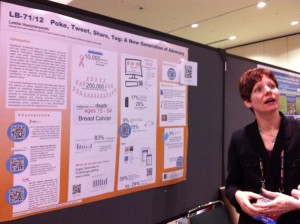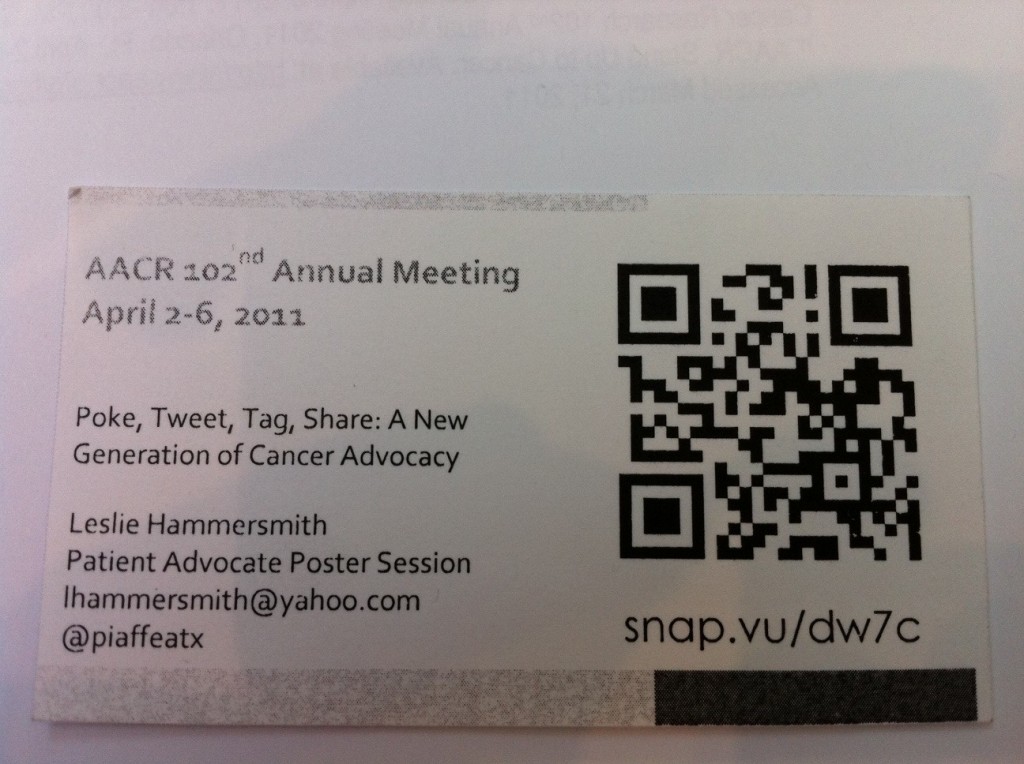Whole genome sequencing and personalized medicine
Two articles and an accompanying editorial published in the Journal of the American Medical Association (JAMA) today look at whole genome sequencing in a small number of cancer patients with Acute Myeloid Leukemia (AML) and Acute Promyelocytic Leukemia (APL) to determine what mutations had developed and whether that knowledge would aid in clinical decision making.
In the case of one of the patients, the information learned from the sequencing led to a change in treatment, but sadly the AML patient died soon after.
There is a big caveat here – whole genome sequencing is not yet ready for prime time – the technique currently costs in the range of $20-40K per person, but in the future as costs come down, the $1K genome should be a viable goal to aid oncologists make clinical decisions through a more personalised medicine approach. By that, I mean selecting a patient’s therapy based on the underlying molecular biology of their cancer – an individual thumbprint, if you like.
In the case of Welch et al’s, (2011) study, they wanted to see if sequencing could be taken out of the lab and into the clinical arena. They had a particularly challenging case – a woman with a family history of cancer who was diagnosed with early onset breast and ovarian cancers in her thirties and unfortunately developed treatment-related AML (t-AML) and sadly died soon after.
The question here is what factor(s) might contribute to the cancer susceptibility?
BRCA1 and 2 analysis was not particularly useful in this case. However, whole genome sequencing from the skin and leukemic cells identified a new TP53 mutation – essentially the technique picked up unknown structural variants that are missed by conventional assays. As Pasche and Absher summarised it in their editorial:
“The patient was heterozygous for a novel deletion of 3 exons of the TP53 gene and that the intact copy of TP53 had been lost in the leukemic cells due to uniparental disomy.
This mutation in TP53 would not have been discovered without whole-genome sequencing.”
This finding also has important implications for the offspring of carriers of this mutation.
Link et al’s (2011) study was a little different. They also had a challenging case – a patient diagnosed and being treated for AML who was awaiting an allogeneic stem cell transplant. The pre-treatment bone marrow cells were used for the whole genome sequencing.
The sequencing results produced a surprise from the analysis – they revealed the presenece of a novel and cytogenetically invisible fusion oncogene normally associated with APL, thus enabling the clinical team to reconsider a new treatment plan for the patient based on the differential diagnosis.
The editorial concluded that:
“Hence, recent advances in genomics are likely to change the molecular characterization of cancer rapidly and provide a path for the personalized treatment of patients with cancer.”
To which I would add the caveat that whole genome sequencing, while intuitively very useful, is unlikely to have a wider impact until sequencing costs come down to more sensible and practical levels.
However, this time is fast approaching since genome sequencing costs are beating Moore’s Law in the rate they are decreasing. The research papers published in JAMA this week are an important milestone on the road to personalised medicine.
References:
![]() Welch, J., Westervelt, P., Ding, L., Larson, D., Klco, J., Kulkarni, S., Wallis, J., Chen, K., Payton, J., Fulton, R., Veizer, J., Schmidt, H., Vickery, T., Heath, S., Watson, M., Tomasson, M., Link, D., Graubert, T., DiPersio, J., Mardis, E., Ley, T., & Wilson, R. (2011). Use of Whole-Genome Sequencing to Diagnose a Cryptic Fusion Oncogene JAMA: The Journal of the American Medical Association, 305 (15), 1577-1584 DOI: 10.1001/jama.2011.497
Welch, J., Westervelt, P., Ding, L., Larson, D., Klco, J., Kulkarni, S., Wallis, J., Chen, K., Payton, J., Fulton, R., Veizer, J., Schmidt, H., Vickery, T., Heath, S., Watson, M., Tomasson, M., Link, D., Graubert, T., DiPersio, J., Mardis, E., Ley, T., & Wilson, R. (2011). Use of Whole-Genome Sequencing to Diagnose a Cryptic Fusion Oncogene JAMA: The Journal of the American Medical Association, 305 (15), 1577-1584 DOI: 10.1001/jama.2011.497
Link, D., Schuettpelz, L., Shen, D., Wang, J., Walter, M., Kulkarni, S., Payton, J., Ivanovich, J., Goodfellow, P., Le Beau, M., Koboldt, D., Dooling, D., Fulton, R., Bender, R., Fulton, L., Delehaunty, K., Fronick, C., Appelbaum, E., Schmidt, H., Abbott, R., O’Laughlin, M., Chen, K., McLellan, M., Varghese, N., Nagarajan, R., Heath, S., Graubert, T., Ding, L., Ley, T., Zambetti, G., Wilson, R., & Mardis, E. (2011). Identification of a Novel TP53 Cancer Susceptibility Mutation Through Whole-Genome Sequencing of a Patient With Therapy-Related AML JAMA: The Journal of the American Medical Association, 305 (15), 1568-1576 DOI: 10.1001/jama.2011.473
Pasche, B., & Absher, D. (2011). Whole-Genome Sequencing: A Step Closer to Personalized Medicine JAMA: The Journal of the American Medical Association, 305 (15), 1596-1597 DOI: 10.1001/jama.2011.484




